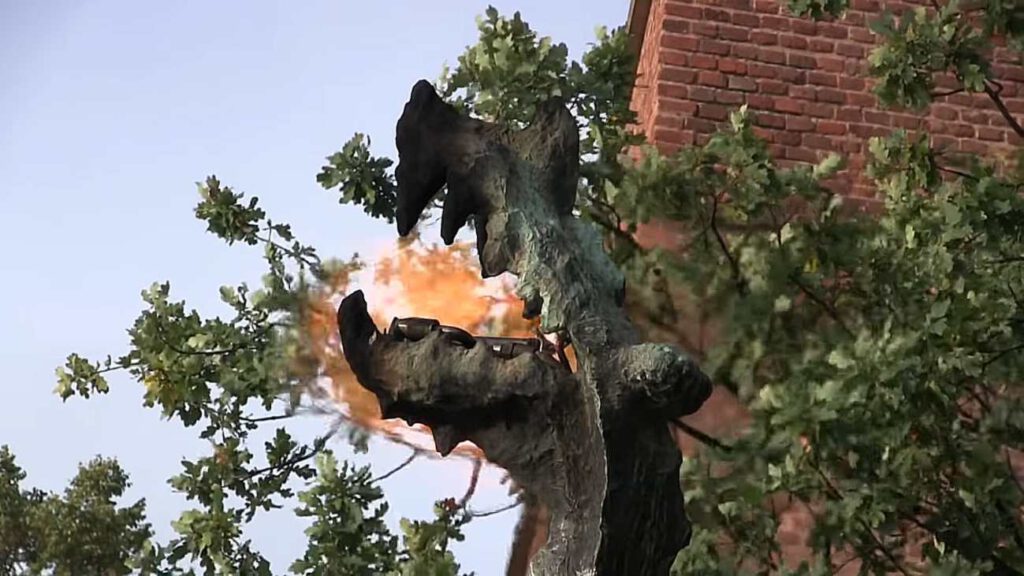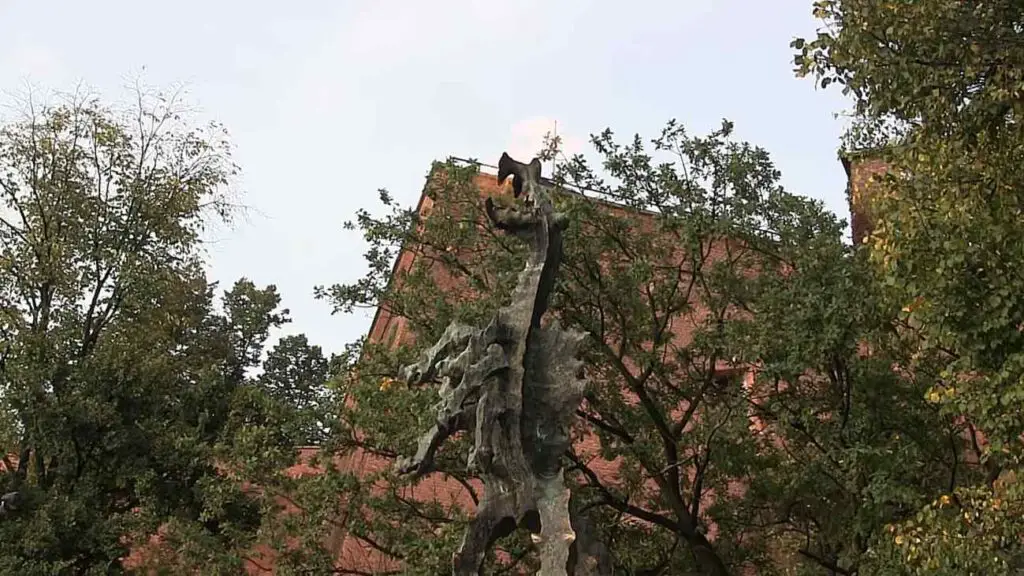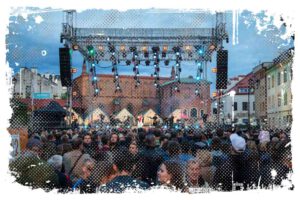So, you’re interested in the iconic symbol of Krakow, the Wawel Dragon also called The Dragon of Krakow. Let me say, it’s an exciting tale and, indeed, an important part of the city’s history. The legendary creature’s supposed lair was a cavern known as the Dragon’s Den, nestled at the base of Wawel Hill in Krakow.

A Peek Into The Past – The Legend Of The Wawel Dragon
To understand this story better, we need to travel back to the 12th and 13th centuries, when the legend was born. A prominent figure, Bishop Wincenty Kadłubek, penned the oldest known account of the Wawel Dragon in his Polish Chronicle. I believe, this tale not only shaped the city’s history but also gives us a glimpse into the era’s political landscape.
- If you are near Dragon, I suggest you also check the museums and free activities you can do in Kraków: Are There Any Free Things To Do in Krakow? Absolutely!
In Kadłubek’s story, the main character is a Polish ruler named Grakch. Grakch was respected and just, managing his kingdom with a firm hand. I am convinced that he was the kind of leader who deserved gratitude, and his people thought so too. They planned to pass the throne to his male heir, but a tragedy within the family changed everything.

Here’s where the dragon steps into the picture. Now, if you need to imagine this dragon, think of it as the worst nightmare for Grakch’s subjects. It was fierce and terrifying, demanding sacrifices of cattle from the city folks. If they didn’t comply, they’d become the dragon’s dinner themselves!
↳ Make sure to read my guide to the most amazing places to stay in Kraków:
How to Find Best Place to Stay in Krakow Old Town – Your Guide
Moved by the plight of his people, Grakch ordered his sons to defeat this beast. Directly confronting the dragon was a recipe for disaster, so they decided to play a trick. They offered the dragon cattle hides filled with burning sulfur, cleverly disguised as a regular meal. I can tell you, this didn’t go down well with the dragon. It gobbled up the deceptive feast, which led to its fiery demise from the inside out.
With the dragon’s defeat, the brothers returned home as heroes. But the fear of losing his throne drove the younger brother to kill the elder. He blamed the Wawel dragon for his sibling’s death and was warmly welcomed by his father as his succesor. However, it’s worth to say that his deceit was eventually uncovered, leading to his banishment. It wasn’t Grakch’s son, but his daughter, Wanda, who ended up ruling the land.
The Wawel Dragon Cherished Icon in Literature, Film, and Stone
Let’s continue on this fascinating journey of the Wawel Dragon, shall we? I can tell you that Wincenty Kadłubek’s legend inspired several other chroniclers over time, including notable names like Jan Długosz, Maciej Miechowita, Bernard Wapowski, and Sebastian Münster. These guys had the job of recording history, and they often drew from Kadłubek’s dragon tale.
I think it’s worth noting that the Wawel Dragon isn’t just confined to the pages of history books. This mythical creature broke into mainstream culture, becoming a hero in literature and even film! In fact, many Polish school textbooks and collections of legends feature the story of the dragon.
There were these polish animated film series „Kidnapping Baltazar Gąbka” and „Wyprawa profesora Gąbka”. That’s right, the Wawel Dragon stars there too!
The Wawel Dragon Monument
But wait, the dragon’s fame doesn’t stop there. There’s a massive monument dedicated to this legendary beast! Let me say, this is not just any monument. Standing at a towering 6 metres, the Wawel Dragon statue was crafted by Bronisław Chromy in 1969 and has been a fixture at the foot of the Wawel Hill since 1972.
This bronze sculpture, perched on a hefty boulder, is one of Krakow’s most cherished landmarks. There was an initial plan to partially submerge the statue in the Vistula River, but that idea was dropped. The fear was that trash carried by the river’s current would stick to the statue, tarnishing its grandeur.

What makes this sculpture stand out? Well, it’s powered by natural gas and, I am convinced, it’s one of the coolest parts – the dragon breathes real fire. Back in 2005, there was even an option to send an SMS to trigger a fiery display from the dragon.
Today, this fiery show happens every 10 minutes, all day, every day.
Being there, you need to know that this sculpture is one of the most visited monuments in Krakow, and kids particularly love it. So, there’s no denying it, the Wawel Dragon has carved out a place in the hearts of both residents and tourists alike.
Exploring the Lair – The Dragon’s Den
If you’re an adventurer at heart, you’ll surely want to visit the „Dragon’s Den”. This intriguing karst cave is steeped in the dragon’s lore. I can tell you, it’s an experience you wouldn’t want to miss. It’s also where the grand statue of the dragon stands.
But, it is worth to say that you can only explore this cave during the tourist season, which is from April to October. The opening hours change with the months:
- April, September, October – 10:00 – 17:00
- May, June – 10:00 – 18:00
- July, August – 10:00 – 19:00
The ticket price is a mere PLN 3.00. The ticket booths stay open until 15 minutes before closing time.
The Dragon’s Legacy – Wawel Cathedral and The Bones
Now, if you’re planning a trip to Wawel Cathedral, there’s something special that you need to see. At the cathedral’s western entrance, you’ll find some bones. Some folks believe these are the remains of the legendary Wawel Dragon!
Here’s the kicker.
Legend says when these bones fall off the chain, it’s the end of the world. So, they’re handled with the utmost care.
I know it sounds dramatic, but hey, that’s what legends are for, right? These bones have been hanging there since the early Middle Ages.
Of course, later researchers did burst the bubble a bit. They didn’t define these bones as dragon remains, but rather as remnants of some unknown large animals that have since gone extinct. Just recently, in 1937, Henryk Hoyer, a profesor at the Jagiellonian University, suggested they were parts of a rhinoceros skull, a whale’s lower jaw, and a mammoth.
Whether they’re the remains of a dragon or some extinct animals, one thing is certain. I believe they’re worth a visit. After all, where else would you get to see such unique pieces of history?
References:
- https://pl.wikipedia.org/wiki/Smok_Wawelski_(rze%C5%BAba)
- https://historiaposzukaj.pl/wiedza,obiekty,323,obiekt_smok_wawelski.html




